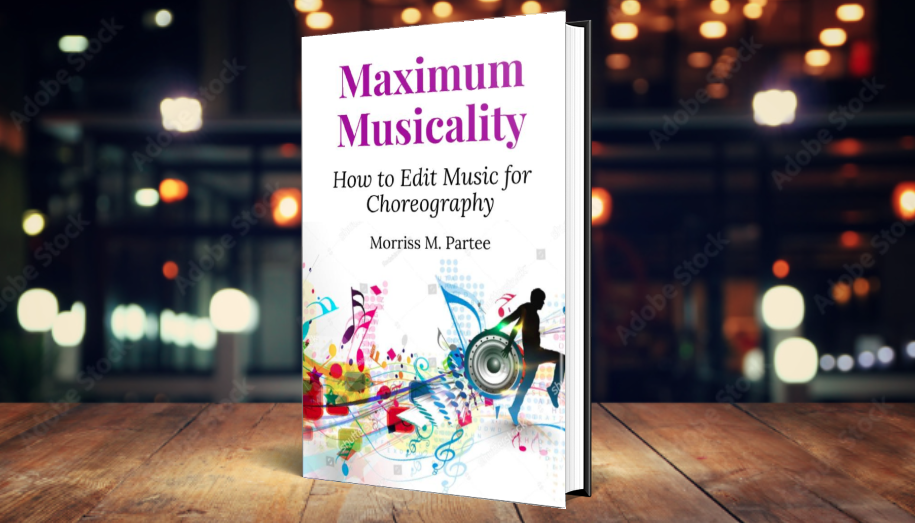With the proliferation of free and cheap audio editing software, many dance studios have taken it upon themselves to handle the editing of their dance music. While it is certainly better to edit a song yourself than to not edit it at all, a top-notch dance studio may want to consider having their songs professionally edited.
Why would a dance studio have their music professionally edited?
Teachers and students at a quality dance studio spend hours upon hours perfecting their dances for recital, competition and other performances. Students practice all of their routines in class and at home. Every nuance, every detail of motion is perfected and cleaned up. Every detail, from how the dancers enter to how they exit the stage is choreographed for optimum audience enjoyment and professional presentation. The same is true for costumes and makeup. The details of the appearance are examined and refined.
So if a dance studio is spending countless hours and dollars to ensure every aspect of the dancers’ movement and appearance is the best it can possibly be, why wouldn’t they also want to ensure that the music, the foundation for every dance performance, is also as great as it can be? Why use music for performance that has glitches, awkward fade-outs, mismatched beats, frozen statue intros, abrupt jumps and other scars when seamless music can be created by a skilled music editor?
What does professional music editing for dance entail?
Some people think that dance editing is simply employed to remove swear words or other inappropriate lyrics from a song. But editing music well is much more than than, and certainly much more than fading a song out at the desired length of the routine. In fact, 90% of the time fading the music out at the desired length for the routine is at an awkward point in the song, leading to the most common music editing mistake heard at dance competitions. In this blog post I explain exactly how to avoid awkward fade-outs. (Here are the other Top 5 mistakes made in dance music editing.)
A skilled music editor, who understands what dancers need in a competition or recital-length routine, does a lot more than simply a fade a song out or edit out swear words. A skilled song editor analyzes a song for its structure, and then determines how that structure can be changed, sliced, or rearranged in order produce a new song that makes sense from beginning to end. Usually this involves shortening an intro, removing a verse and/or a chorus, shortening instrumental solos, and so on. This process is something that requires a great deal of skill and experience, in both music and audio editing, to execute flawlessly.
Skilled audio mix engineers not only rearrange the structure of an existing piece of music, they can perform quite a number of other audio engineering techniques such as changing the equalization of the music to better fit the dancer, speed up or slow down all or parts of a song without changing the pitch, add reverb to edit points or endings where it makes sense, and even increase the volume (slightly) of older recordings without causing clipping distortion.
The sad but unfortunate fact is that many dance teachers don’t even realize that they utilizing music with poor edits in their routines. Dance teachers are trained in the visual arts, and are experts at choreography and movement. Few are also exceptionally well-versed in music structure or audio editing. Therefore, dance studios would enhance the quality of their performance by utilizing the services of an experienced music editor to handle the process of editing songs to the right length for dance numbers.
As I mentioned before, it’s not too late to have a song with a music hiccup or glitch fixed in time for Nationals. In fact, I’ve just finished repairing a song like that right now… the dance routine is SPECTACULAR, winning Platinum and 2nd overall, and the music is by a well-known artist who hit the scene in the 80s. The song, as edited by the student, was wonderful all the way up until the very end when there was a fade out, followed by an abrupt jump into the last few notes. But have no fear, Squirrel Trench Audio now has the ending smooth and flawless! And since the routine has already been choreographed, I kept all aspects of the song identical to the original edit, except for the newly perfected ending. If you are cleaning up your dance moves after regionals, going into nationals, it makes sense to clean up your music too!
 I love helping dance teachers and choreographers have the most outstanding, powerful, and impactful music possible. It’s an honor that so many dance teachers and studio owners entrust me to fix and clean the mixes they create. When DTs send me mixes, I hear three problems most often. They are relatively easily avoided. Here they are with their easy fixes:
I love helping dance teachers and choreographers have the most outstanding, powerful, and impactful music possible. It’s an honor that so many dance teachers and studio owners entrust me to fix and clean the mixes they create. When DTs send me mixes, I hear three problems most often. They are relatively easily avoided. Here they are with their easy fixes: